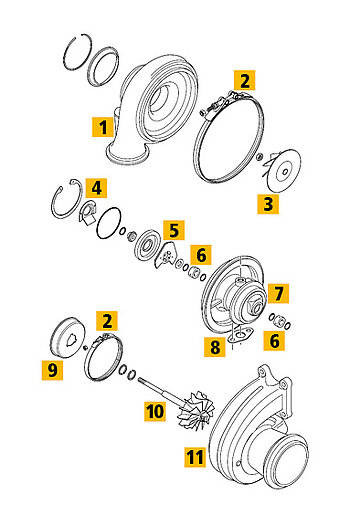Product Portrait
Turbocharger
Suitable for: Fiat, Iveco
Hints & tips
Before replacing the turbocharger, the cause of the damage must be localised. What consequential damage was caused? Are foreign bodies or engine oil deposits in the suction channel? Clean suction channel, replace charging air cooler if required. Engine oil deposits in the charging air cooler may result in damage to the engine. Engine oil drawn in burns in an uncontrolled manner and the engine can rotate excessively. Subsequently, check the lubricant line for leakproofness and soiling.
Adjust turbocharger to the assembly components, where applicable twist the housing and assemble with the seals provided. Finally, replace the engine oil and check the air filter, replace if required.

Structure of the turbocharger:
- Compressor housing
- Clamps
- Compressor wheel
- Oil separator
- Washer
- Bushing
- Bearing housing
- Gasket
- Heat shield
- Exhaust gas wheel with shaft
- Turbine housing
